Add Bot to Facebook Page
While we develop our own integration with Facebook, it's possible to integrate your bot using Zapier. As at the time of writing, Zapier offers a free 14 day trial. Mottle is in no way associated with Zapier, nor do we benefit financially from it. Use at your own risk.
You can easily have your bot respond to messages sent to your Facebook Page by creating a Zapier integration.
-
Make sure you have a Facebook Page already setup before continuing.
-
Sign in to Zapier and click Create Zap:

-
For Trigger, select Facebook Messenger and for Event select New Message sent to Page:
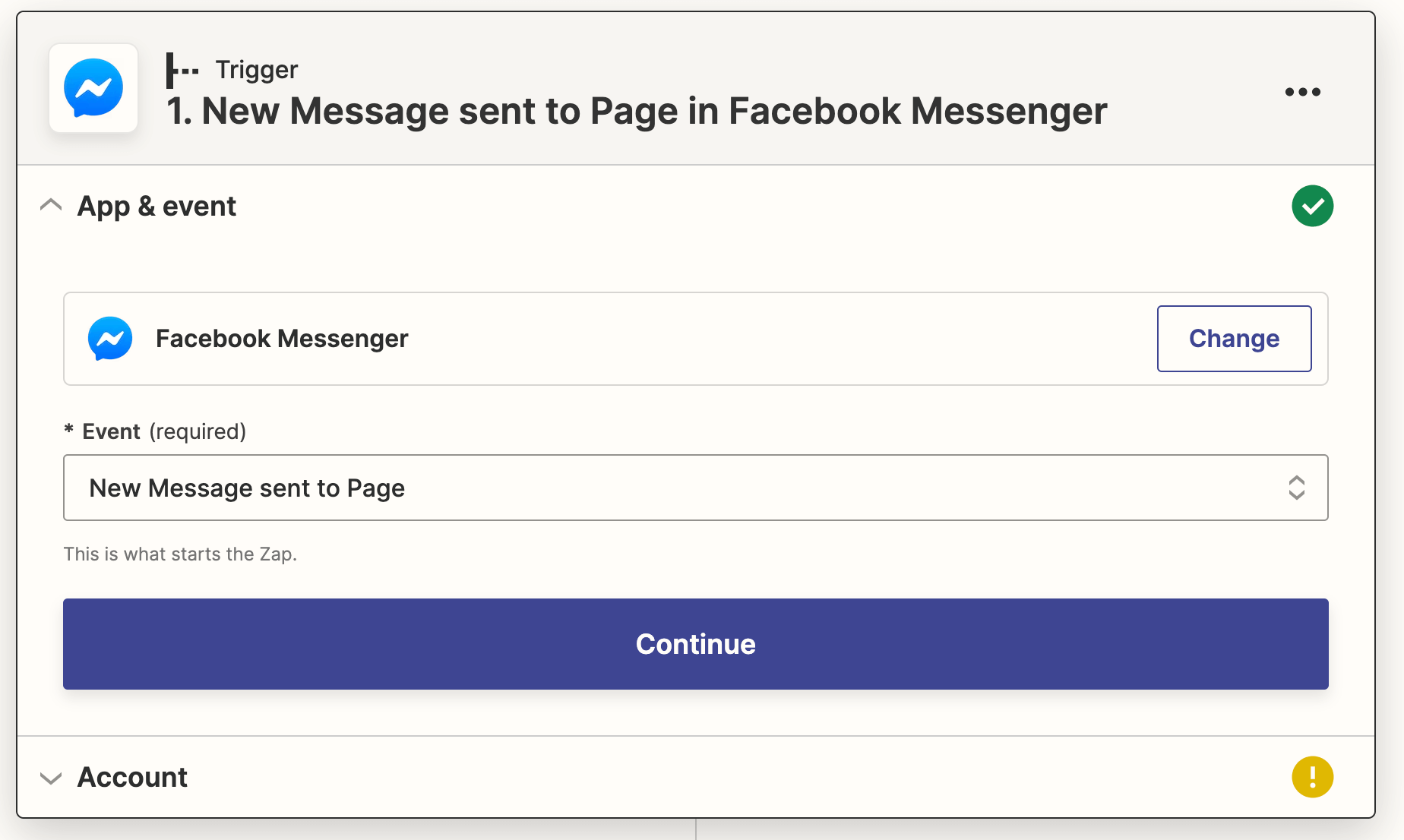
-
Click Continue and Sign in to your Facebook account to connect it.
-
Ensure the correct Facebook account is selected and click Continue.
-
Select your Facebook Page from the dropdown.
-
Click Continue.
-
When you're done setting up the trigger, it's time to test the integration with your Facebook page. To do this, switch to your personal Facebook account and send a message to your Facebook page. Then, back on Zapier, click into the New Message sent to Page X... dropdown, click on Load More, and select your most recent message. Otherwise you're stuck with a message from Zapier's Facebook page, not a real user. (We need a "real" user id in a later step.)
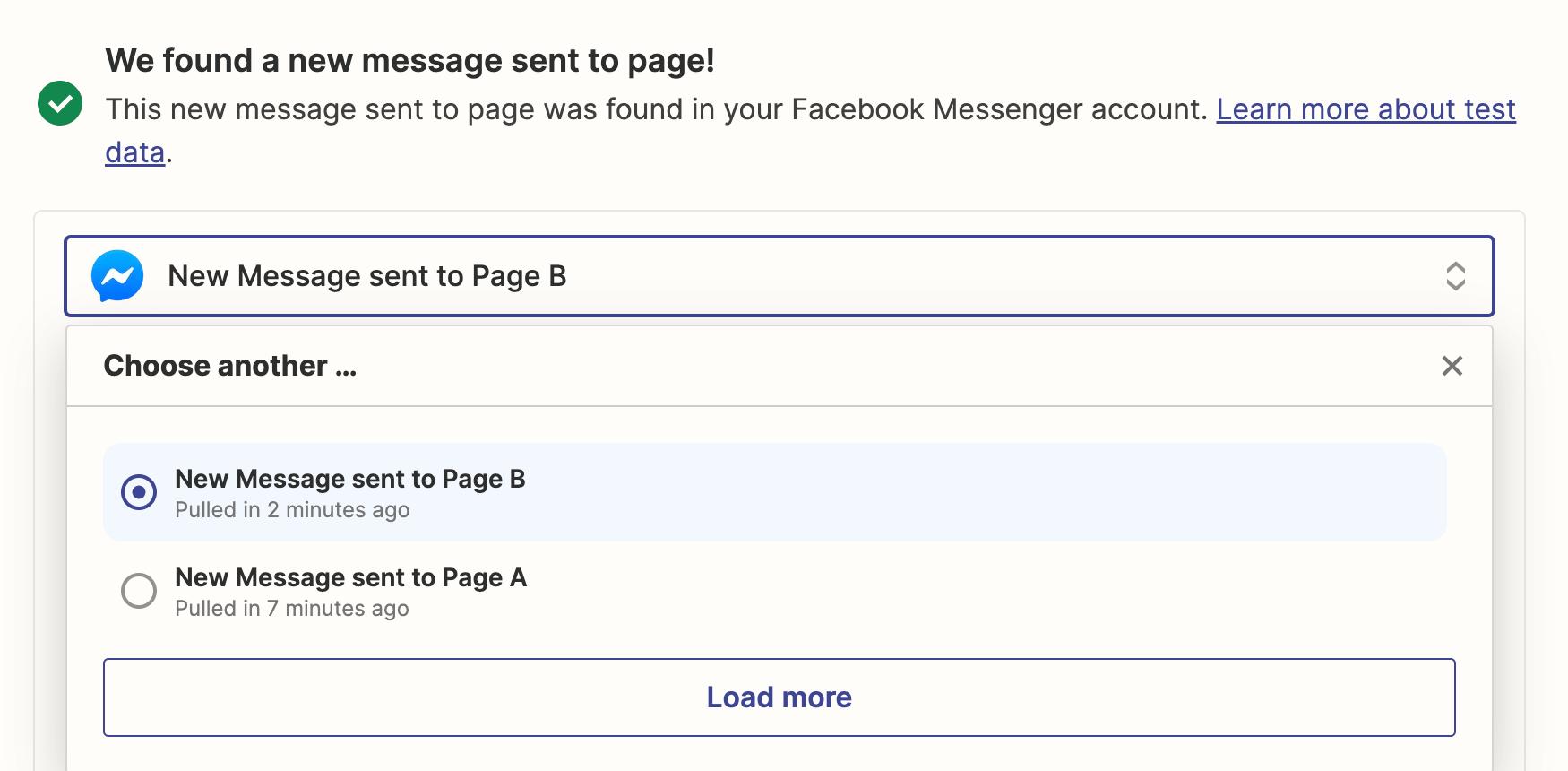
-
When setup correctly, click Continue
-
For Action, select Webhooks by Zapier:
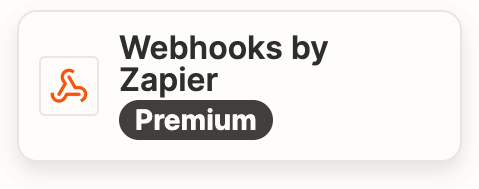
- For Event choose POST:

-
Click Continue.
-
For URL enter
https://api.mottle.com/connect?bot=YOUR_BOT_ID– being careful to substituteYOUR_BOT_IDfor your bot ID. Your bot ID can be found on the Publish / API Page. -
For Payload Type select JSON.
-
For Data, we need to add two rows:
-
secret– This should be your bot's secret key. Again, you can find this on the Publish / API Page. -
question– Click on the field to select a dynamic variable. Select the Facebook variable that starts with "Message Text:". It should say something likeMessage Text: \{whatever you typed\}.
It should look something like this:
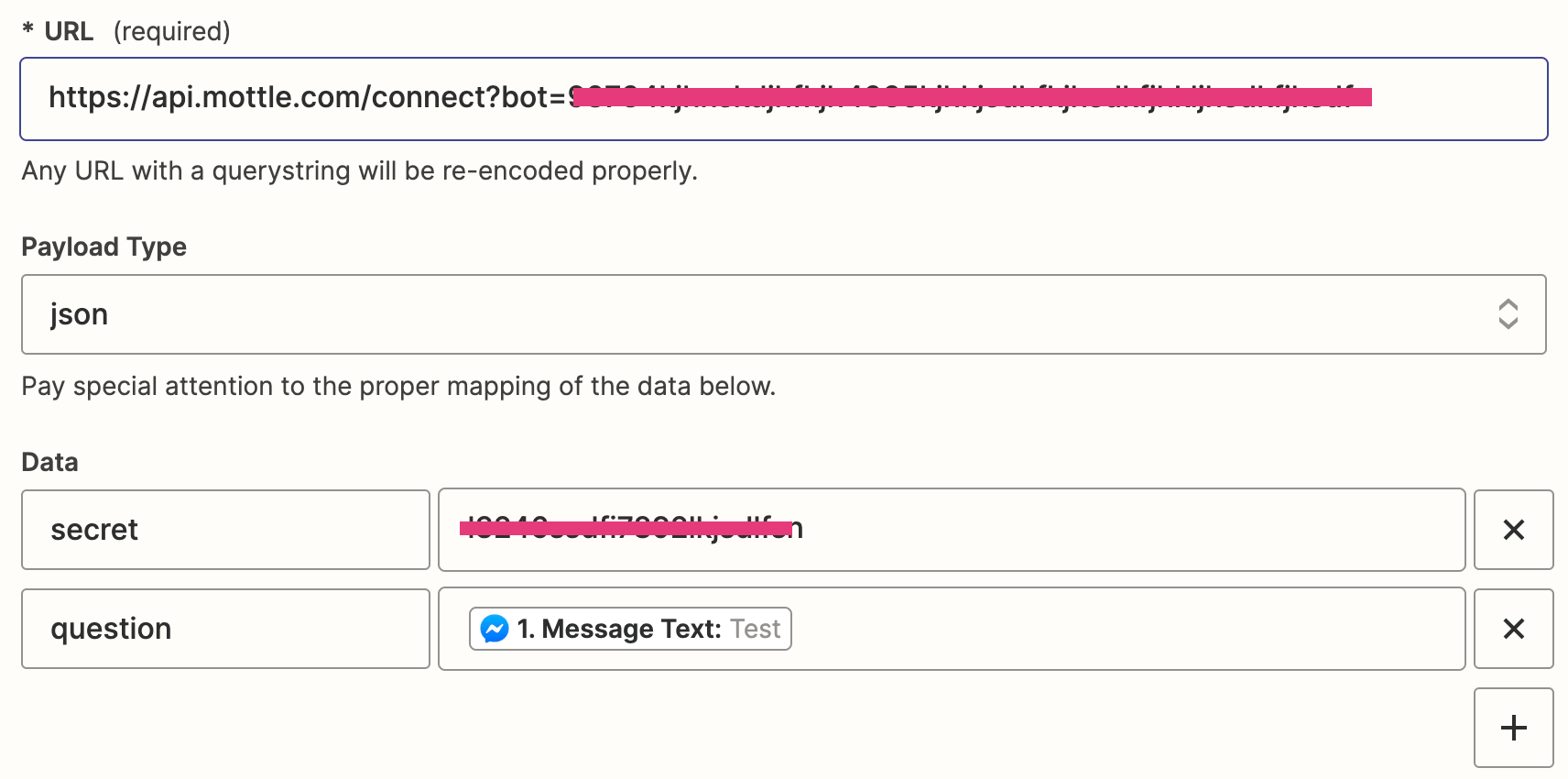
-
-
The rest of the options can be left as is. Click Continue.
-
Click Test Action to test the connection to Mottle. If you've done everything correctly, you will see something like the following:

-
We're not done, so don't Publish your Zap just yet. We need to send your bot's answer back to Facebook.
-
Click on the plus icon at the bottom of the screen:

- Select Facebook Messenger again, and for the Event Type select Send Message from Page:

-
Click Continue.
-
Ensure the same Facebook Page is selected. Click Continue again.
-
For Recipient ID, click on the field, and then click Show all Options. Select Sender PSID.
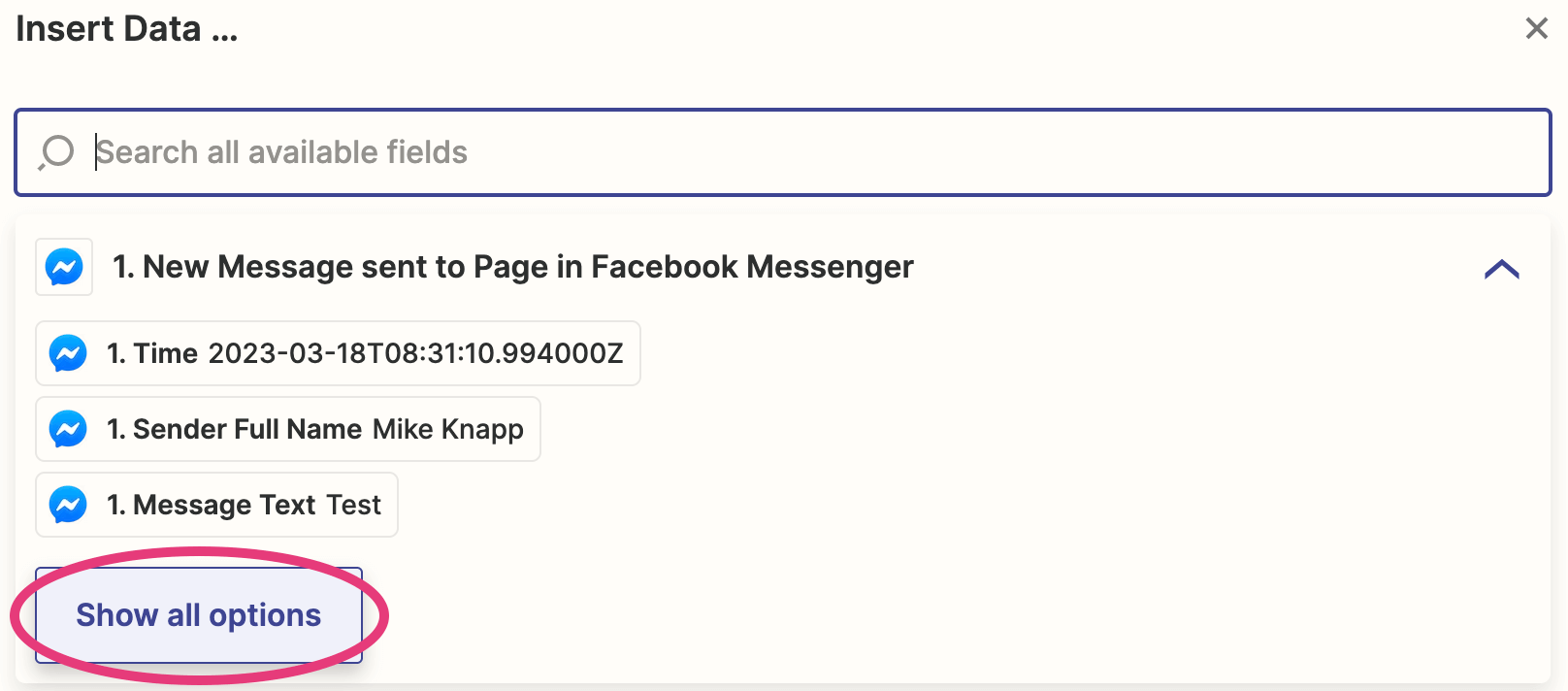
Look for this:

-
For Text, click the box, and then select the dynamic variable: 2. POST in Webhooks by Zapier > 2. Answer {the answer from before...}
-
Click Test Action. If you now head back to Facebook Messenger, and find the chat with your Facebook Page. You should see a message from your bot.
-
Click Publish Zap > Publish & Turn On to activate your bot.
-
Once activated, try sending your Facebook Page a message. In a few seconds you should receive a message back from your bot.
-
Congratulations! You've now linked your bot to your Facebook Page!
Since Zapier Webhook requests are limited to 30 seconds, you may experience occasional timeouts, particularly when the OpenAI API is under stress (OpenAI status page). Unfortunately there is no way to send this information back to the user – the query will just fail silently. We will try to address this issue when we build our own Facebook integration.